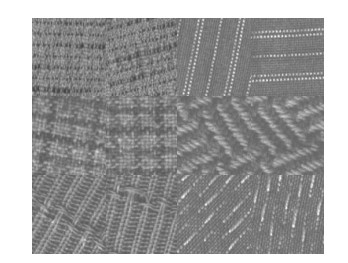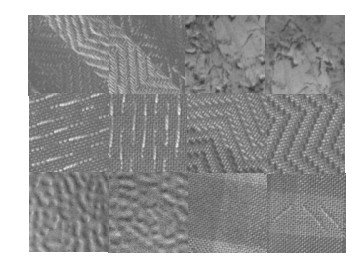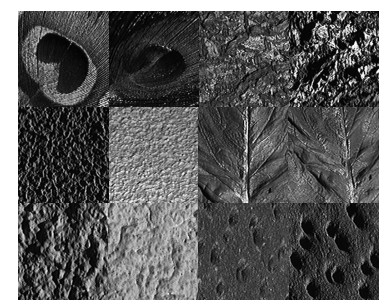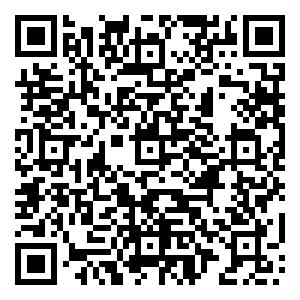-
摘要
针对基于LBP的许多改进方法需要提前训练,对旋转和照明变化鲁棒性较差的特点,本文通过融合CLBP和图像表面的局部几何不变特征提出了一种新的纹理分类方法。该算法首先计算图像表面的局部几何不变特征,然后对其进行量化和编码。其次,再将编码结果与CLBP直方图进行融合。本文提出的算法能够同时提取图像的宏观和微观特征,且具有不明显增加特征维度,无需提前训练,对图像的旋转和光照变化保持不变的特点。在两个标准纹理数据库上进行实验验证,结果表明,本文算法与其它算法相比在分类精度和鲁棒性上都有明显的提高。

Abstract
For the problems of needing pre-training and poor robustness to rotation and illumination changes of various improved algorithms based on local binary pattern (LBP), this paper presents a new texture classification algorithm by integrating the completed local binary pattern (CLBP) and the local geometric invariant features of the image surface. In our algorithm, the local geometric invariant features are first computed. Then the computed results are further quantified and encoded to make combination with the CLBP histogram. The proposed algorithm can extract image macroscopic and microscopic features simultaneously, and it has the properties of not significantly increasing feature dimension, without pre-training, and invariance to the rotation and illumination changes. Experimental verifications are conducted on two standard texture databases, and the results demonstrate that the proposed algorithm outperforms the comparative classification algorithms in classification accuracy and robustness.
-
Key words:
- LBP /
- CLBP /
- texture classification /
- local geometric invariant features
-
Overview

Overview: As an important approach for describing and identifying targets, texture plays an important role in image processing, pattern recognition and machine vision. Textures vary in rotation, illumination, and slight viewpoint variations as imaging conditions change, classification algorithm using local binary pattern (LBP) can achieve prominent effectiveness. However, the selected rotation invariant structural patterns in LBP and many LBP variants are discrete and have poor robustness to rotation changes. Furthermore, the feature information extracted from many algorithms is complex and redundant, resulting in a high computational cost and feature dimensionality. A preeminent texture feature not only requires superior identification ability and robustness, but also has the characteristics of low computational complexity and feature dimension. Local geometric invariant feature can keep invariance under the condition of changing the impact factors such as rotation, scaling, viewpoint transformation and illumination. Furthermore, texture classification algorithm using local geometric invariant feature can achieve remarkable effectiveness in the condition of non-rigid deformation, shelter, noise and other influencing factors. Therefore, local geometric invariant feature has been used in many fields of computer vision, such as wide baseline image matching, panorama splicing, target recognition, image retrieval and scene reconstruction. To make the texture classification algorithm robust, local geometric invariant feature of target is usually extracted as its characteristic descriptor. For the problems of needing pre-training and poor robustness to rotation and illumination changes of various improved algorithms based on local binary pattern (LBP), this paper presents a new texture classification algorithm by integrating the completed local binary pattern (CLBP) and the local geometric invariant features of the image surface. In our algorithm, the local geometric invariant features are first computed and quantified. Then the quantified results are coded to keep consistent with the coding scheme of CLBP. Finally, the local geometric invariant feature histogram is made concatenation with the histogram of CLBP. Since we use the principal curvatures of a point on an image surface as the local geometric invariant feature, both micro- and macro-structure texture information can also be captured simultaneously. Moreover, the principal curvature has the property of continuous rotation invariance. Therefore, the proposed algorithm can extract the macroscopic and microscopic features of the image at the same time, and it has the properties of moderate feature dimension, without pre-training, and invariance to the rotation and illumination changes. Experimental verifications are conducted on two standard texture databases, and the results demonstrates that the proposed algorithm outperforms the comparative classification algorithms in classification accuracy and robustness.
-

-
表 1 不同算法在TC10和TC12上的分类率
Table 1. Classification rate (%) of different algorithms on TC10 and TC12
算法 (P, R)=(8, 1) (P, R)=(16, 2) (P, R)=(24, 3) TC10 TC12 均值 TC10 TC12 均值 TC10 TC12 均值 “t” “h” “t” “h” “t” “h” LTP[8] 76.06 62.56 63.42 67.34 96.11 85.20 85.87 89.06 98.64 92.59 91.52 94.25 VAR[6] 90.00 62.93 64.35 72.42 86.71 63.47 67.26 72.48 81.66 58.98 65.18 68.60 LBP/VAR[6] 96.56 79.31 78.08 84.65 97.84 85.76 84.54 89.38 98.15 87.13 87.08 90.79 DLBP[17] - - - - 97.7 92.1 88.7 92.83 98.1 91.6 87.4 92.37 CLBP_S/M[9] 94.66 82.75 83.14 86.85 97.89 90.55 91.11 93.18 90.32 93.58 93.35 95.41 CLBP_S/M/C[9] 96.56 90.30 92.29 93.05 98.72 93.54 93.91 95.39 98.93 95.32 94.53 96.26 CLBC_S/M/C[10] 97.16 89.79 92.92 93.29 98.54 93.26 94.07 95.29 98.78 94.00 93.24 95.67 GCLBP 97.94 91.10 93.17 94.07 98.98 94.06 94.25 95.76 99.16 95.55 95.44 96.72 表 2 不同算法在CURet数据库上的分类率
Table 2. Classification rate (%) of different algorithms on CURet database
N (P, R)=(8, 1) (P, R)=(16, 2) (P, R)=(24, 3) 46 23 12 6 46 23 12 6 46 23 12 6 LTP[8] 85.77 78.49 70.77 60.48 90.21 84.74 76.24 66.75 91.04 85.15 77.88 68.64 LBP/VAR[6] 61.55 55.33 49.28 41.96 55.49 50.76 45.14 39.07 55.60 51.33 44.50 38.82 CLBP_S[9] 80.03 73.07 67.60 58.68 84.05 79.05 72.01 62.73 86.06 81.63 75.51 67.00 CLBP_M[9] 74.78 67.86 59.95 57.52 82.71 75.93 68.32 57.55 86.59 79.76 72.12 62.81 CLBP_S_M[9] 93.24 88.19 80.43 71.45 93.20 89.01 81.93 72.54 93.94 89.88 83.95 73.23 CLBC_S/M/C[9] 95.19 91.2 83.81 73.44 95.35 91.24 84.66 75.41 95.38 91.77 85.01 76.16 CLBC_S/M/C[10] 94.78 90.12 82.92 72.85 95.39 91.30 85.91 75.17 95.26 90.55 84.07 73.18 GCLBP 95.22 91.26 83.95 73.68 95.42 91.36 84.84 75.65 95.36 91.82 85.16 76.31 -
参考文献
[1] El Merabet Y, Ruichek Y. Local concave-and-convex micro-structure patterns for texture classification[J]. Pattern Recognition, 2018, 76: 303–322. doi: 10.1016/j.patcog.2017.11.005
[2] 程德强, 唐世轩, 冯晨晨, 等.改进的HOG-CLBC的行人检测方法[J].光电工程, 2018, 45(8): 180111. doi: 10.12086/oee.2018.180111
Cheng D Q, Tang S X, Feng C C, et al. Extended HOG-CLBC for pedstrain detection[J]. Opto-Electronic Engineering, 2018, 45(8): 180111. doi: 10.12086/oee.2018.180111
[3] Haralick R M, Shanmugam K, Dinstein I. Textural features for image classification[J]. IEEE Transactions on Systems, Man, and Cybernetics, 1973, SMC-3(6): 610–621. doi: 10.1109/TSMC.1973.4309314
[4] Manjunath B S, Ma W Y. Texture features for browsing and retrieval of image data[J]. IEEE Transactions on Pattern Analysis and Machine Intelligence, 1996, 18(8): 837–842. doi: 10.1109/34.531803
[5] Porter R, Canagarajah N. Robust rotation invariant texture classification[C]//Proceedings of 1997 IEEE International Conference on Acoustics, Speech, and Signal Processing, 1997: 3157–3160.
[6] Ojala T, Pietikäinen M, Mäenpää T. Multiresolution gray-scale and rotation invariant texture classification with local binary patterns[J]. IEEE Transactions on Pattern Analysis and Machine Intelligence, 2002, 24(7): 971–987. doi: 10.1109/TPAMI.2002.1017623
[7] 侯志强, 王利平, 郭建新, 等.基于颜色、空间和纹理信息的目标跟踪[J].光电工程, 2018, 45(5): 170643. doi: 10.12086/oee.2018.170643
Hou Z Q, Wang L P, Guo J X, et al. An object tracking algorithm based on color, space and texture information[J]. Opto-Electronic Engineering, 2018, 45(5): 170643. doi: 10.12086/oee.2018.170643
[8] Tan X Y, Triggs B. Enhanced local texture feature sets for face recognition under difficult lighting conditions[J]. IEEE Transactions on Image Processing, 2010, 19(6): 1635–1650. doi: 10.1109/TIP.2010.2042645
[9] Guo Z H, Zhang L, Zhang D. A completed modeling of local binary pattern operator for texture classification[J]. IEEE Transactions on Image Processing, 2010, 19(6): 1657–1663. doi: 10.1109/TIP.2010.2044957
[10] Zhao Y, Huang D S, Jia W. Completed local binary count for rotation invariant texture classification[J]. IEEE Transactions on Image Processing, 2012, 21(10): 4492–4497. doi: 10.1109/TIP.2012.2204271
[11] Dalal N, Triggs B. Histograms of oriented gradients for human detection[C]//Proceedings of 2005 IEEE Computer Society Conference on Computer Vision and Pattern Recognition, 2005: 886–893.
[12] Do Carmo M P. Differential Geometry of Curves and Surfaces [M]. Englewood Cliffs: Prentice-Hall, 1976.
[13] Mellor M, Hong B W, Brady M. Locally rotation, contrast, and scale invariant descriptors for texture analysis[J]. IEEE Transactions on Pattern Analysis and Machine Intelligence, 2008, 30(1): 52–61. doi: 10.1109/TPAMI.2007.1161
[14] Zhang J, Zhao H, Liang J M. Continuous rotation invariant local descriptors for texton dictionary-based texture classification[J]. Computer Vision and Image Understanding, 2013, 117(1): 56–75. doi: 10.1016/j.cviu.2012.10.004
[15] Hanbay K, Alpaslan N, Talu M F, et al. Principal curvatures based rotation invariant algorithms for efficient texture classification[J]. Neurocomputing, 2016, 199: 77–89. doi: 10.1016/j.neucom.2016.03.032
[16] Hanbay K, Alpaslan N, Talu M F, et al. Continuous rotation invariant features for gradient-based texture classification[J]. Computer Vision and Image Understanding, 2015, 132: 87–101. doi: 10.1016/j.cviu.2014.10.004
[17] Liao S, Law M W K, Chung A C S. Dominant local binary patterns for texture classification[J]. IEEE Transactions on Image Processing, 2009, 18(5): 1107–1118. doi: 10.1109/TIP.2009.2015682
-
访问统计


 E-mail Alert
E-mail Alert RSS
RSS
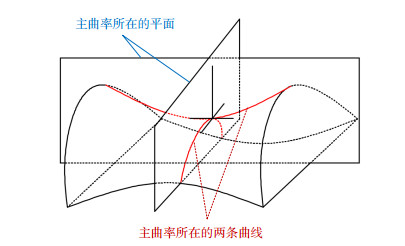
 下载:
下载:

